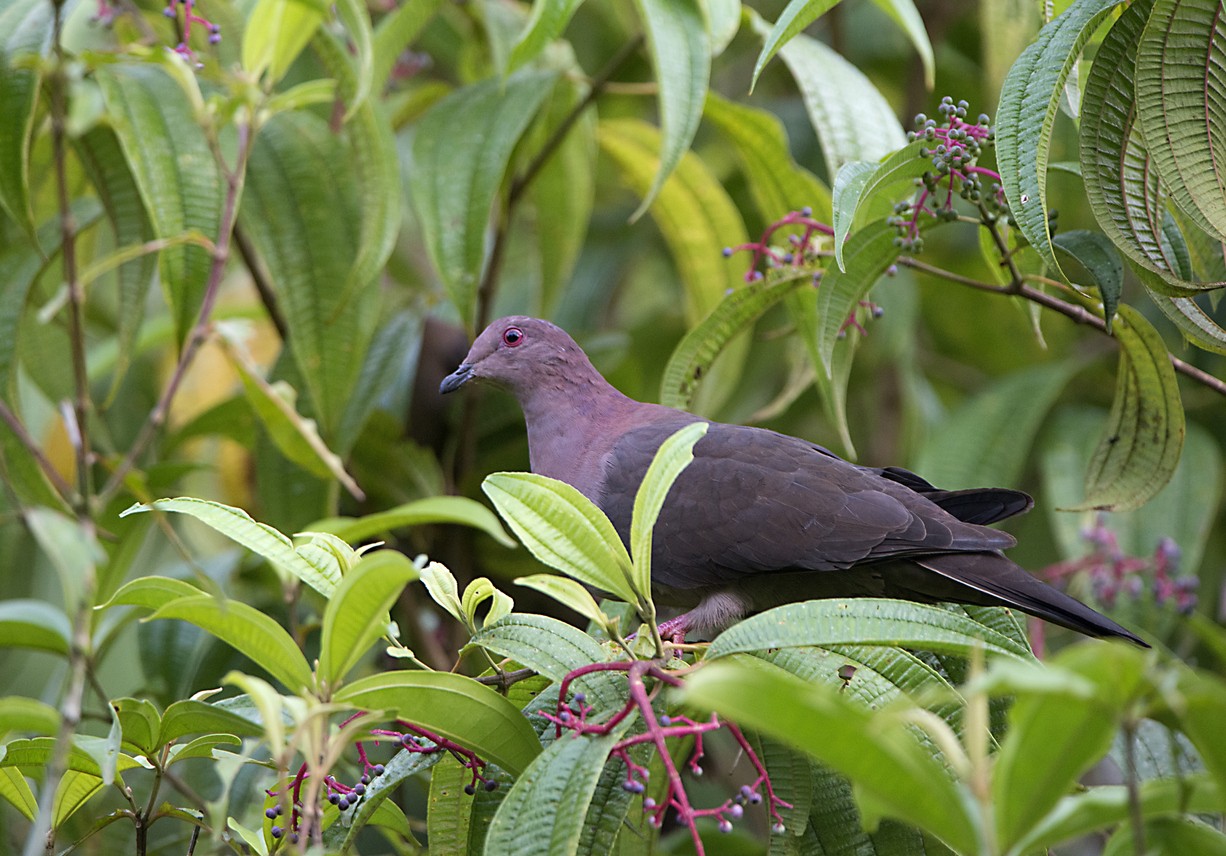Short-billed Pigeon
A species of American Pigeons Scientific name : Patagioenas nigrirostris Genus : American Pigeons
Short-billed Pigeon, A species of American Pigeons
Botanical name: Patagioenas nigrirostris
Genus: American Pigeons
Content
Description General Info

Description
The short-billed pigeon (Patagioenas nigrirostris) is a largish pigeon which breeds from southern Mexico south to northwestern Colombia. It is a member of a clade of Patagioenas that contains the smaller and rather plain species with characteristic calls that constitute the subgenus Oenoenas. It is found in lowland forest canopy and semi-open woodland, and builds a rudimentary platform nest out of twigs 5–30 m (16–98 ft) high in a tree or amongst vines. It lays one white egg. The short-billed pigeon is 26.5 cm (10.4 in) long and weighs 150 g (5.3 oz). It is unpatterned and mainly wine-purple in colour, becoming browner on the belly and more olive-brown on the back. The tail and primary flight feathers are blackish, the bill is black, and the legs and eyes are purple-red. The female is slightly duller and browner than the male, and the juvenile bird has a greyish brown head, neck and breast, with cinnamon scaling on the head and upperparts. The short-billed pigeon has a complex, loud and high-pitched call coo... cu-COO k’CO coohoo; this is usually uttered singly or at least with considerable pauses between calls. It is normally sighted in pairs as it forages in the tree tops for mistletoe, fruits and berries, but may also be seen on tracks and roadsides seeking grit or small invertebrates. In southern Central America, this species is replaced at higher altitudes by its close relative, the very similar ruddy pigeon, Patagioenas subvinacea. They can be distinguished by the slower, more complex "song" of the short-billed pigeon. 
Size
26 - 31 cm
Nest Placement
Tree
Feeding Habits
Short-billed Pigeon primarily consumes mistletoe, other fruits, and berries. It engages in foraging for food in the tree canopy, exhibiting a preference for certain fruit-bearing plants, a behavior distinctive amongst its peers. Feeding predominantly occurs during morning or evening low-light conditions.
Habitat
The short-billed Pigeon typically inhabits the upper canopy and edges of forests, as well as tall secondary growth within humid lowland regions. These birds are adapted to environments that are generally dense with vegetation and moisture. Although they can be found at varying altitudes, their range extends up to 1500 meters above sea level, but they are notably absent from the drier Pacific northwest areas of regions such as Costa Rica.
Dite type
Granivorous
General Info
Feeding Habits
Bird food type


Scientific Classification
Phylum
Chordates Class
Birds Order
Pigeons and doves Family
Dove Genus
American Pigeons Species
Short-billed Pigeon